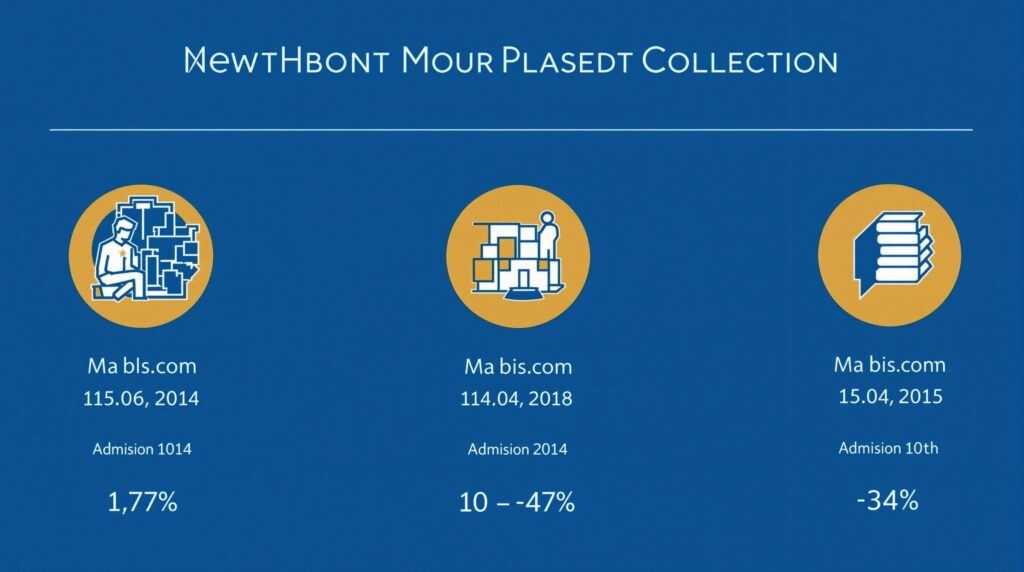Joining a grant writers association has become a critical stepping stone for professionals seeking to advance in the educational funding sector in 2025. As federal education budgets expand and state-level grants proliferate, membership in these specialized professional communities offers unique advantages that can dramatically increase success rates for both novice and experienced grant writers.
Key Takeaways
- Grant writing jobs are growing 6% faster than average writing professions, with 3,100 new positions expected by 2031
- Trained association members achieve up to 80% success rates in securing educational funding compared to 20% for self-taught writers
- Professional certification through associations can increase your competitiveness by 34% in the education grant market
- Members gain access to specialized templates for federal education applications like Perkins V that reduce errors
- The Grant Writers Association provides networking opportunities with over 10,500 professionals in the field
The Rising Demand for Education Grant Writers in 2025
The educational funding landscape in 2025 presents unprecedented opportunities for grant writing professionals. According to Zippia, grant writing positions are projected to grow 6% from 2018-2028, outpacing the national average growth rate of 4% for writing professions. This translates to approximately 3,100 new jobs expected by 2031, creating a robust job market for those with the right skills.
Federal education funding expansions are driving this demand, with $18.6 billion allocated for Title I programs and an additional $8 billion for academic recovery initiatives in 2025. This influx of funding requires skilled professionals who can navigate complex application processes and craft compelling proposals that stand out in a competitive field.
Demographics also play an interesting role in this profession. Currently, 70.6% of grant writers are women, with an average age of 45 years old. This creates opportunities for both entry-level professionals seeking mentorship and mid-career changers looking to leverage transferable skills in the education sector.

2025 Educational Funding Landscape: Where the Opportunities Are
The current funding landscape offers diverse opportunities for education-focused grant writers. The federal government has allocated $57 million to the Career-Connected High Schools initiative, which focuses on dual enrollment and work-based learning programs. This creates significant opportunities for education grant writers who can effectively align school programs with workforce development needs.
At the state level, STEM grants are prioritizing “nontraditional careers” and project-based learning, with an emphasis on equity in education. These grants often require detailed knowledge of both educational outcomes and specific compliance requirements that association members are trained to address.
Community colleges represent another growth area, with $300,000 grants available for programs targeting disadvantaged students. The shift from federal to state funding models is creating new opportunities for grant writers who understand local priorities and can craft regionally relevant proposals.
Key funding areas to watch in 2025 include:
- Early childhood education initiatives
- Workforce alignment programs
- Digital literacy grants
- STEM education with emphasis on underrepresented groups
- Post-pandemic academic recovery funding
How Association Membership Translates to Funding Success
Joining a grant writers association provides tangible benefits that directly impact success rates. Trained grant writers achieve up to 80% success rates compared to just 20% for self-taught writers, according to data from Unlock-Grants. Organizations that invest in professional development for their grant writers see an average 46% ROI on that investment.
Membership costs are minimal compared to the potential returns. The Puget Sound Grantwriters Association (PSGA) charges just $110 per year, while the average freelance grant writer earns $52,719 annually. This small investment provides access to discounted professional tools (up to 20% off platforms like GrantHub) and connects members to networks of over 10,500 professionals.
One of the most valuable benefits is access to grant proposal templates for federal applications like Perkins V. These templates reduce errors through standardization and help writers focus on customizing the most impactful sections rather than reinventing structural elements with each application.
Professional Development and Certification Benefits
The competitive advantage of certification cannot be overstated in the current job market. The Certified Grant Writer® credential increases competitiveness by 34%, making it a worthwhile investment for serious professionals. This certification signals to employers and clients that you possess specialized knowledge in the field and adhere to ethical standards.
Association workshops focus on critical skills that make the difference between funded and rejected proposals:
- Storytelling techniques that humanize data and statistics
- Budget design for multi-year grants with complex matching requirements
- Compliance training for specialized education grants
- Technical training on navigating federal grant portals like Grants.gov
- Data visualization for impactful presentations of outcomes
Most associations also offer mentorship programs that pair newcomers with experienced professionals. These relationships dramatically reduce application errors and provide invaluable guidance on unwritten rules and expectations that often determine success in competitive funding environments.
Essential Tools and Resources for Modern Grant Writers
Modern grant writing requires efficiency and precision, which is why associations provide members with discounted access to industry-standard tools. PSGA members receive 20% off GrantHub subscriptions, providing substantial savings on this essential platform.
AI-driven grant discovery tools are becoming increasingly important for tracking state and foundation opportunities. These platforms can save hours of research time and help writers focus on the most promising funding sources for their specific educational initiatives.
The time-saving benefits of association resources are substantial:
- 30-50% reduction in application preparation time
- Reusable grant section templates for Common App-style proposals
- Curated resources for tracking programs like Early Childhood Education grants
- Pre-vetted budget templates that meet funder requirements
- Peer review networks to identify proposal weaknesses before submission
These resources allow writers to focus on the creative aspects of grant development rather than repetitive administrative tasks, resulting in higher-quality proposals and better outcomes for educational institutions.
Success Stories: Real Results from Association Membership
The impact of association membership is best illustrated through real-world success stories. One notable example involves a rural school district that secured $1.2 million in Perkins V funds through association partnerships. The district leveraged association templates and peer review processes to align its Career and Technical Education program with state labor needs, resulting in a compelling proposal that stood out among competitors.
Another success story comes from a community college that increased technical program enrollment by 40% using association-guided Work-Based Learning grants. The college’s grant writer credited the educational grants networking opportunities provided by their association membership as crucial to identifying the right funding opportunity and crafting a winning proposal.
The ROI breakdown for membership is compelling when examined closely:
- Annual membership cost: $110-$250 depending on the association
- Average grant secured with association support: $75,000-$1.2 million
- Time saved on research and preparation: 15-25 hours per application
- Increased success rate: 20% to 80% (a 300% improvement)
These tangible benefits demonstrate why membership has become essential for serious education grant professionals in 2025.
Future Trends in Educational Grant Writing
The grant writing profession is evolving rapidly, with a projected 4% growth in “writers and authors” roles through 2031, driven primarily by education and healthcare sectors. Several emerging trends will shape the field in the coming years.
First, there’s an increasing demand for modular grant components that can be quickly adapted to meet diverse funder requirements. Grant writers who can build versatile proposal libraries will have a significant advantage in the fast-moving funding environment.
Data visualization and outcomes-based reporting are becoming essential skills as funders increasingly prioritize measurable impacts. Grant writers who can effectively translate educational outcomes into compelling visual narratives will see higher success rates.
The integration of predictive analytics for identifying high-impact funding opportunities represents another frontier. Associations are beginning to train members on using data-driven approaches to target grants with the highest probability of success for specific educational initiatives.
Finally, remote collaboration tools and AI-assisted drafting are transforming how grant teams work together, making it possible for writers to collaborate effectively across different institutions and geographic areas.
Getting Started: How to Join and Maximize Association Benefits
If you’re ready to boost your career in educational grant writing, joining an association is your next step. Start by comparing membership options—the Puget Sound Grantwriters Association costs $110 per year, while the Grant Writers Association offers tiered membership plans to accommodate different career stages and needs.
Before committing, take advantage of free resources to experience the value. Many associations offer complimentary webinars on topics like “Adapting to Federal Funding Changes” that provide a preview of member benefits.
Once you join, these immediate benefits become available:
- Templates for 2025’s top education grants including STEM innovation funds
- Access to member-only job boards with exclusive opportunities
- Discounted or free training on new federal guidelines
- Peer networking events with established professionals
- Mentorship matching with experienced grant writers
To maximize your membership, create a strategic plan for utilizing these resources. Begin with the certification programs most relevant to your career goals, then gradually expand your network through virtual and in-person events. Set specific targets for the number of peer reviews you’ll participate in, both to improve your own work and to gain visibility within the community.
By actively engaging with your association’s resources, you’ll position yourself for success in the growing field of educational grant writing in 2025 and beyond.
Sources
Xello World – Navigating Funding Reforms for K-12 Education in 2025 and Beyond



